Classic Airframes 1/48 Westland Whirlwind Mk. I
This is my Classic Airframes Whirlwind I, from the 2003 re-release of the Classic Airframes kit.
The Westland Whirlwind was, at the time of its initial appearance, one of the most advanced fighter aircraft ever built. Unfortunately, it was built to an official specification that was inherently limited, most definitely by the choice of the thoroughly second-rate Rolls-Royce Peregrine engine for its power plant; the problems with the Peregrine had a great deal to do with why the Whirlwind was not available in numbers for the battle it was designed for - the Battle of Britain - and there was no likelihood of Rolls-Royce being able to devote the engineering time and talent necessary to make it right in the light of the demand for the far superior Merlin. By the time the idea of powering the Whirlwind with the Merlin was brought up, the design of the aircraft had been superseded. Thus, the aircraft was never able to live up to the hope expressed in its initial design.
That said, within its restrictions of size and power plant, the Whirlwind was a very good fighter. Below 10,000 feet, a competent pilot could take on the German Bf-109 with confidence, and with the then-stunning centerline armament of four 20mm cannon, there was very little in the way of potential targets that could survive a burst of fire.
The Whirlwind came into existence as a result of Air Ministry Specification F.37/35, issued in 1935, a time when the standard RAF fighter carried two rifle-caliber machine guns and was nothing more than incrementally improved over what had flown on the Western Front 20 years earlier. The airplane that resulted from the specification was revolutionary: the first single-seat, twin engine, cannon-armed fighter to be produced and used operationally by any air force.
Design work began in 1936 under the leadership of the legendary W.E.W. Petter - who would go on to design the Canberra - and the Westland design beat submissions by both Bristol and Hawkers, with an order for two prototypes placed in February 1937. The first prototype, L6844, was flown by Westland chief test pilot Harald Penrose at Yeovil on October 11, 1938, and it rapidly proved itself faster at low altitude than any other fighter then in existence.
The twin-engine configuration was chosen because there was not an engine of sufficient power on its own to provide the necessary speed while carrying the never-before-heard-of armament of 4 20mm cannon; additionally, the layout allowed this heavy armament to be placed directly on the centerline, providing a concentration of firepower of 600 lbs/min, which would not be equaled by another fighter until the appearance of the Bristol Beaufighter. The pilot was provided with the first "bubble canopy" to be used by any combat aircraft, conferring excellent view in all directions.
From the flying viewpoint, the Whirlwind had excellent maneuverability and an outstanding rate of climb that suited it perfectly as a point-defense fighter in opposition to bombers. While Handley-Page slats were fitted to the outer wings, the production aircraft flew with them locked shut, since at least one crash of the test aircraft was attributable to slat failure.
After being handed over to the Royal Aircraft Establishment at Farnborough, the Whirlwind demonstrated such performance that an order for 200 was placed in January 1939, with first delivery for the following September.
In May, 1939, the still-secret fighter was demonstrated to several Members of Parliament at Northolt. In the words of one M.P., "the fastest time of the day was not put up by the Spitfire, but by a secret twin-engined machine that streaked over from the west." In fact, below 5,000 feet, the Whirlwind was 15 mph faster than the Spitfire I.
Unfortunately, Whirlwind production fell badly behind schedule, with the main culprit being the non-delivery of Peregrine engines by Rolls-Royce, due to the need on their part to increase production of the Merlin. Rather than September, 1939, the first production Whirlwind - P6966 - did not appear until May, 1940. Initially, the airplane was to equip 25 Squadron, which was then flying Blenheim IFs. Due to a change in re-equipment policy, the first Whirlwind squadron was 263, which had flown Gloster Gladiators in Norway that Spring, with the first Whirlwinds arriving on July 6, 1940.
As a picture of things to come, the first write-off of a Whirlwind with 263 Squadron ended in disaster on August 7, when Pilot Officer McDermott took off in P6966, the first production aircraft. The right main wheel burst its tire right at takeoff, though McDermott was able to get airborne. He then learned the landing gear was badly damaged; he could not land on it and could not retract it for a wheels-up landing. After baling out, the Whirlwind went 30 feet deep when it struck ground; to top things off, McDermott was mistaken as a German by the local Home Guard and made prisoner.
Due to lack of engines, 263 only had eight Whirlwinds as of October 1, 1940. The squadron finally became operational on December 7, 1940, and had flown 30 sorties by the end of the month. Their first combat came on January 12, 1941, when P/O Stein and Flt. Sgt. Mason were ordered to intercept a Ju-88 returning from a raid. Stein intercepted the German bomber 40 miles southwest of the Scilly Isles and hit the Ju-88 solidly, though he could not observe a crash in the cloudy weather and was only credited with a "damaged." On February 9th, F/O Hughes and P/O Graham destroyed an Arado Ar-196 south of Dodman Point. During the first four months of 1941, 263 lost six pilots through flying accidents and three in action.
In June, the squadron began "Warhead" operations, which were strafing sorties against German targets in northwest France and the Low Countries, and by that August had destroyed three Ju-88s, eight Ju-87s and five Bf-109s on strafing missions, as well as sunk one E-boat. On August 7, 1941, four Whirlwinds were intercepted by 20 Bf-109s; the Whirlwinds managed to shoot down two of their attackers, in a fight in which two of the four were damaged and one force-landed when it returned to base. 263 had demonstrated the value of the Whirlwind in low altitude operations, and that it could defend itself when necessary.
A second order for 200 Whirlwinds that had been place in October 1939 was cancelled, while the original order for 200 was reduced to 114, the last of which left the production line in January 1942.
In September, 1941, the Whirlwind equipped a second squadron when 137 Squadron took three on charge. On February 12, 1942, during "The Channel Dash," 137 lost four Whirlwinds in a dog fight with 20 Bf-109s defending the German warships.
While 263 Squadron found their hunting grounds around Brest and Cherbourg on the Cotentin Peninsula, 137 - operating from Manston - covered the Channel and Northern France. Both units became well-known for train-busting, with one pilot from 137 taking out four locomotives on one mission. Both squadrons developed night attack capability, destroying nearly half the trains they were credited with during night strafing missions.
On July 21, 1942 263 Squadron first attempted to turn the Whirlwind into a fighter-bomber, equipping one aircraft with racks for a 250-lb or 500-lb bomb outboard of each engine. The first test mission of the "Whirlibomber" took place on September 9, 1942, when eight Whirlwinds attacked four armed trawlers near Cherbourg, sinking two of them.
The Whirlwinds were finally taken off operations in the Spring of 1943, when first 137 and then 263 Squadron were re-equipped with Typhoons.
The Whirlwind was first released by Classic Airframes in May 1999. The kit was based on the Cooper Details multi-media kit which had been released in 1993, and included a detailed resin cockpit designed by Roy Sutherland. This kit is a re-release of the original from 2003, made on new molds and with an injection-molded canopy rather than the vacuformed canopies of the original release.
As a re-release, the kit is an early CA kit - parts do not fit as well as they might, and that means there is a requirement for considerable "modeling skill" in the use of putty, Mr. Surfacer, and sanding sticks, which will be necessary in order to turn the kit into an acceptable model.
This kit has white metal bomb racks for two 250-lb bombs. However, neither airplane provided in the markings was a "Whirlibomber" in those markings. The box art airplane, P6874, HE-Z, can be done as a Whirlibomber if you leave off the Dieppe Raid special markings since the first Whirlibomber mission was not flown until three weeks after Dieppe.
Having built both the Cooper Details vacuform/multi-media kit and the first release of this kit, I came to the project prepared. The first thing I did was to take out my Dremel Tool and thin down the fuselage halves in the area where the cockpit would go, so it would fit properly. I then painted and detailed the resin cockpit and assembled it into the fuselage. Fit of the fuselage was still as problematic as I recalled, and everything was gotten into position using cyanoacrylate glue and "zip kicker" to hold it together.
The engine nacelles and the wing assemble easily, but they do not fit together too well. I used a lot of Bondo auto putty on the forward engine cowl-to-wing attachment, sanding it down to get a smooth shape, then going over everything with Mr. Surfacer 500. The wing and fuselage sub-assemblies were also difficult, and were finally held together with more cyanoacrylate and then puttied over to be sanded down. As with any limited-run kit, test fit several times before gluing once.
Once all the puttying had been sanded down, and Mr. Surfacer applied and then sanded down again, I rescribed the light engraved detail that had been sanded off in the process.
I had decided to do the box art airplane in the distinctive Dieppe Raid markings. After pre-shading the model by air-brushing black over the panel lines, I also filled in the black areas of the raid markings on the lower outer wings. I then applied white to the nose and the wing stripes, being sure to not make it a "solid" white, since this was a temporary water-based paint applied for that day's operations only, so I wanted a "ragged" look.
Since this airplane, by serial, was delivered in 1941 and would have been in Dark Earth/Dark Green/Sky, and then repainted at the squadron level in the new colors of Ocean Grey/Dark Green/Sea Grey Medium, I opted to freehand the camouflage, leaving a "soft edge" to the demarcations. Once the paint was dry and the model was unmasked, I gave it a coat of Future. The Classic Airframes decals are printed by MicroScale and went on without difficulty, melting down into the paint with a light application of Micro-Sol.
Since I still had the second vacuform canopy from the first CA Whirlwind I did, I used that in place of the injection-molded canopy, which is just thick enough to have some optical distortion if you mount it in the closed position as I did with this model. The white metal landing gear was assembled without difficulty, though I found I was glad I had Dremeled the gear doors to be as thin as they were, since they made the awkward fit easier. I used nylon repair thread for the antenna wire and IFF antennas.
I have always liked the Whirlwind since the first time I ever saw a picture of one, with its distinctive lines. This kit captures the look of the original very nicely. It is not an easy kit to build, but it is also not terribly difficult for anyone with some experience with limited-run kits. On the accuracy front, the kit is far superior to the botch-up released this year by Trumpeter (surprise surprise).
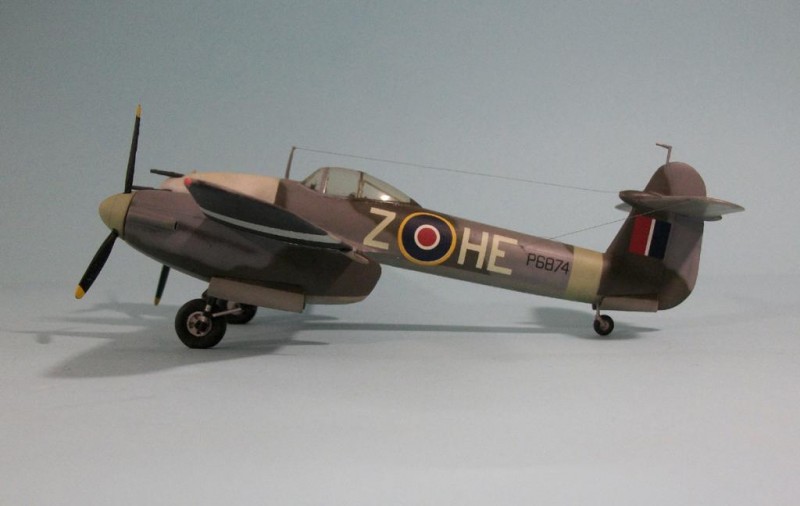
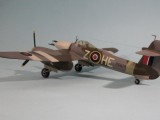
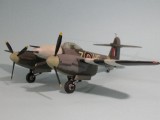
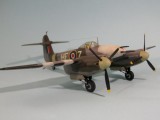
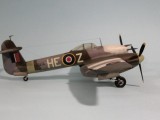
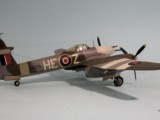
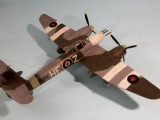
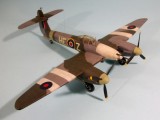

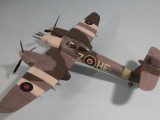
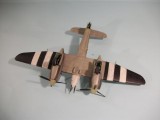
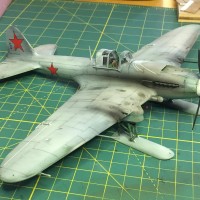
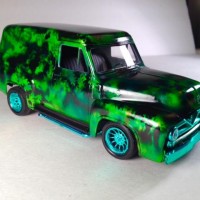
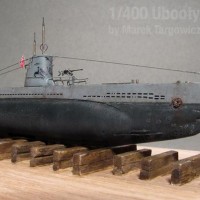

Nice work, and I like the interesting paint scheme. As always, love the historical detail.
Tom, thanks for commenting on the Trumpeter. Great subject choices, lousy realizations, disappointing attention to simple details. All this, and premium prices! What could go wrong?
What a neat airplane! Shame about them engines. I hear they called it the "crikey" as in "Crikey, wot was that?"
Great job, learned some things about the airplane I didn't know.
Didn't know they had special markings for Dieppe, either. Thought it was for Starkey, another revelation to me from recently.
Great effort and very good build! I have the Trump in mystash as CA examples are very rare today - I don't understand why don' they make some cheap reserch before invest into an expensive tooling... Your Whirlwing is great and thanks for the hystorical insight too.
Tom, great write up and a wonderful model to look at. Nice work.
Only the english can make such ugly planes 🙂 ( i don`t doubt it was good, but...)
One of my all time favourite aircraft (and Matija, it is NOT ugly 🙂 ) ! I have it from Pavla in 1/72, just need to get to building it some day...
Regards
Magnus
Tom,
Have always liked the Whirlwind and you have done a beautiful job on this one. I have this kit but have never gotten around to building it. As usual I loved the write up. Keep me coming